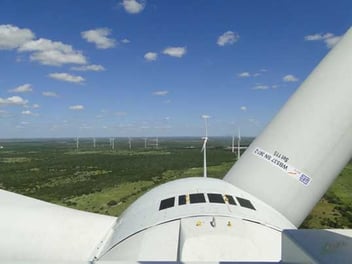Using CFD to reduce yield uncertainty for 200 MW Dorenell Wind Farm, a Scottish project in very complex terrain.
Our Computational Fluid Dynamics (CFD) service leads the industry in the interpretation of simulation results. Many consultants use CFD as a direct replacement for the simple WAsP wind flow model, considering only wind speed results.
Whilst CFD can provide improved wind speed prediction, it can also offer so much more. At Prevailing, we extract as much information as possible from CFD simulations to provide the best net energy yield prediction, considering not only wind speed but also many other flow parameters that impact turbine performance.
At 200MW, Dorenell Wind Farm is set to be one of Scotland’s largest. The site spans 8 km of very complex terrain in the Grampian Mountains, with steep slopes and forests surrounding the site.
Infinergy approached us to deliver an optimised turbine layout design and energy yield prediction for the project.
CFD was used to understand the wind resource and complex flow features across the site. We used the full three-dimensional CFD simulation results to consider whole-rotor flow conditions, which helped de-risk turbine placement.
Our approach ensured that any severe flow conditions over the lower parts of the turbine rotor are detected early, so ensuring that any potential issues (and costs) come to light before turbines are operational. Using innovative turbine performance risk mapping, the detailed and complex modelling findings were distilled into a simple GIS layer for easy use in the turbine layout design process.
The K2 Management approach allowed Infinergy to incorporate industry leading CFD modelling techniques at the layout design stage, providing confidence that the selected turbine locations would perform well, despite the mountainous terrain. The same CFD simulation results were also applied in the subsequent prediction of energy yield for the wind farm, significantly reducing the analysis uncertainty.




